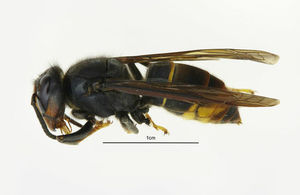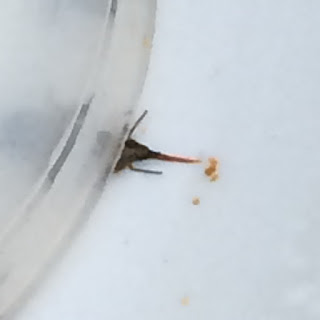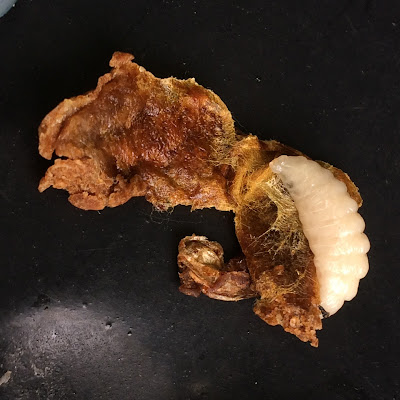So, it's that time of year when we all look back before we look forward, and I thought I'd join in the fun. How have the bees been this year?
Short answer - well! Slightly longer answer - Miriam's bees in hive #1 have done very well (39 lbs of honey is a personal record) and hive #2 is in great shape under Caroline, having had a difficult start to the year under previous queen Florence (RIP).
So, what's gone well, and why? And more importantly, what have I learned?
Firstly, bees notice when you do stuff. Actually, I knew this already - the whole hive is a delicate balance of hormone feedback pathways, and if you upset the balance, it fundamentally changes the bees' behaviour. So it was with Florence's hive - back in May, I decided to start swapping out brood frames (with larvae and pupae) from Florence's hive to Miriam's. This was great news for Miriam's hive, which built up numbers very quickly. But for Florence, it meant not enough brood - and the bees knew it. What they didn't know (how could they?) is that it was my fault. So they mis-identified the culprit as Florence, and mis-diagnosed the problem as her failing to lay enough eggs. Bees have a pretty unforgiving attitude to under-performing queens - so they executed her. Ouch.
Fortunately, they also have the means to create a new queen when required, so a bit of jiggery-pokery later, and they were back up and running with new Queen Caroline.
 |
| Queen Caroline! |
Next up - comb changes. I like to change the brood comb every year, as this prevents viruses, fungi and other pathogens building up in the wax. I was always taught to do it in April, as soon as possible after the first inspection. The problem was that, this year, I simply couldn't, for two reasons: Firstly, the weather was really cold until May, so I really couldn't open the hives up during most of April. And when I did, both colonies were too small - there simply weren't enough worker bees to make any significant amount of wax comb. So I had to wait.
The moment of realisation came just after I'd taken the honey off Miriam's hive in the middle of August. The colony size was at its peak (around 60,000 bees) yet I'd just halved the size of the hive. There were too many bees, and nothing for them to do. The answer? Give them 11 new frames, and get them to work building wax! The results were fantastic - I've never known them to build comb so quickly. So the big learning point was this: Don't get the bees to build comb in the spring when they've got a load of other tasks to do - get them to do it straight after harvest when their season's work is done and they have loads of spare workers. This is going to be part of their annual schedule from now on.
 |
| A lot of bees... |
The next thing that went well - I actually sold some honey! For the first year ever, Beechen Bees honey has been available to buy on the high street. Specifically, in The Deli, Widcombe - about 200 yards from the hives. Big thanks to Nicky and everyone else for such a great job of marketing and selling my honey - really looking forward to doing it again next year!
 |
| Gift Pack - Beechen Bees Honey and Honey's Midford Cider - delicious! |
Winter preparation: I think my bees were in the best shape ever, going into Winter. Miriam's colony already had all the honey they needed, so there was no need to feed them at all. Caroline's needed some feeding, as they had lost a lot of time with the change of queen, and the consequent impact on colony size. Luckily, Autumn was warm with plenty of good forage (ivy and bramble in particular) so they built up numbers well through September. By the time I set the hives in their winter configuration, they both had plenty of bees and honey and were all set to hunker down for the colder weather.
 |
| Winter prep - icing sugar encourages grooming, to remove parasites |
The last big change was the conversion to a different hive design - the WBC. This double-walled hive should help with temperature regulation in the hives, and also assist in keeping them dry inside, which matters down here in Somerset where the climate is often damper than in London, where I started beekeeping.
 |
| Double-walled WBC hives all ready for winter |
... and I should of course mention the blue, black and white paint job on the new hive outer walls, which has brought a resurgence in form to the mighty Bath rugby team! It must be working, 'cos we're currently 3rd in the Premiership...
So here's looking forward to 2017, with hopefully more bees, more honey, and more wins for our boys in Bath!
















































